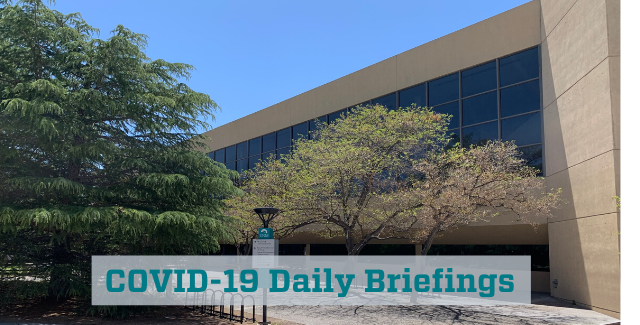Document Type
Brief
Publication Date
6-21-2020
Abstract
Executive Summary:
NM Highlights: Dr. Scrase on-line briefing. NM cases. Campgrounds closed through July 4th. Otero prison reports. Navajo nation’s first police dies. Santa Fe cancels 4th July fireworks. Face coverings donated. NM infection rate drops. US Highlights: AZ Governor issues Exec Order. Economics, Workforce, Supply Chain, PPE: Epidemiology Highlights: Reopening hospitals metric. Comparison of mask effectiveness. Private practices suffer. Healthcare Policy Recommendations: Maternal mortality. Practice Guidelines: Recommendations on hepatobiliary surgery and neonate management. Drugs, Vaccines, Therapies, Clinical Trials: Animal studies generate new vaccine candidates and vaccine platform. 16 new clinical trials registered. Other Science: Respiratory secretions detected by trained dogs. MRI findings show brain lesions in non-survivors. Healthy blood vessels may protect children. Meta-analysis on pneumonia severity. Smoking and COVID-19 severity meta-analysis.
Recommended Citation
Lambert, Christophe G.; Shawn Stoicu; Ingrid Hendrix; Lori D. Sloane; Mari Anixter; Anastasiya Nestsiarovich; Praveen Kumar; Nicolas Lauve; Morgan Edwards-Fligner; Melissa Cossé; Cristian Bologa; and Douglas J. Perkins. "2020-06-19/20/21 DAILY UNM GLOBAL HEALTH COVID-19 BRIEFING." (2020). https://digitalrepository.unm.edu/hsc_covid19_briefings/54


Comments
Disclaimer: The UNM Global Health COVID-19 Briefing is provided as a public service. Sources include not only peer-reviewed literature, but also preliminary research manuscripts that have not been peer reviewed along with lay news media reports. The peer-review process often results in manuscript improvement, with corrections made for errors and unsubstantiated conclusions being corrected. Furthermore, many headlines and summaries in the briefing are written by student volunteers and others who may lack subject matter expertise in this rapidly evolving field. As such, the headlines and summaries should not be regarded as conclusive. Instead, readers are encouraged to use the briefing to identify areas of interest and then use the embedded links to read and critically evaluate the primary sources.